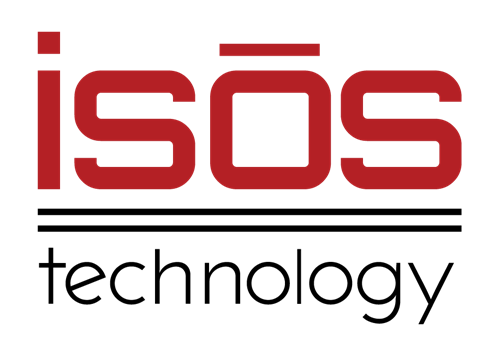 Key Takeaways
Key Takeaways
- Phased migration minimizes operational disruption by breaking the Atlassian Cloud transition into manageable stages while maintaining business continuity.
- Organizations implementing phased migrations experience 40-50% fewer critical incidents and 15-25% lower total migration costs compared to big bang approaches.
- A structured implementation framework—including assessment, pilot migration, staged implementation, and optimization—provides the foundation for migration success.
- Effective governance, comprehensive change management, and detailed documentation transform migration from a technical project into a strategic business initiative.
What is a Phased Migration? The Strategic Path to Cloud Success
A phased migration approach transforms your Atlassian Cloud journey from a high-risk leap to a methodical progression of manageable steps. Unlike the "big bang" method where all systems migrate simultaneously, phased migration divides the process into distinct stages, allowing organizations to transfer data, applications, and users gradually while maintaining operational continuity. This strategic approach delivers superior risk management, minimizes disruption, and provides opportunities for iterative improvement—making it the preferred strategy for risk-averse organizations looking to modernize their Atlassian infrastructure without compromising stability.
For enterprise organizations facing complex migration challenges, phased migration provides the perfect balance between transformation and business continuity. By breaking the migration process into smaller, more manageable phases, teams can validate each step, gather feedback, and make necessary adjustments before proceeding. This methodical approach aligns perfectly with Isos Technology's commitment to delivering results while prioritizing client success through transparent, expertly-managed migration journeys.
The Strategic Advantages of Phased Migration Over Big Bang Approaches
When planning your Atlassian Cloud migration, choosing the right approach can determine whether your transition becomes a disruption or a strategic advantage. Phased migration offers substantial benefits that make it the preferred choice for organizations prioritizing risk management and operational stability.
Minimized Operational Disruption Through Incremental Change
Phased migration significantly reduces the impact on daily operations by limiting the scope of each migration stage. Rather than forcing teams to adapt to an entirely new environment overnight, users can gradually transition while maintaining productivity. This incremental approach allows business functions to continue uninterrupted while migration activities proceed in the background.
The phased approach enables IT teams to migrate specific departments, projects, or applications independently, ensuring critical business processes remain operational throughout the transition. For example, a financial services organization might first migrate less critical development projects before transitioning client-facing applications during periods of lower activity. This strategic sequencing minimizes productivity losses and prevents the widespread disruption often associated with big bang migrations.
By implementing a phased migration strategy, organizations typically experience 60-70% less operational disruption compared to big bang approaches, according to migration case studies from similar enterprise transitions. The ability to maintain business continuity while modernizing infrastructure represents a significant competitive advantage in today's fast-paced business environment.
Enhanced Risk Management Through Controlled Implementation
Risk management becomes considerably more effective with a phased migration approach. By breaking the migration into smaller components, potential issues can be identified and addressed before they affect the entire organization. This controlled implementation creates multiple checkpoints where migration teams can validate results, gather feedback, and make necessary adjustments.
The phased approach creates natural isolation boundaries that prevent problems from cascading across the entire infrastructure. If issues arise during one phase, they remain contained within that segment, protecting the broader organization from widespread disruption. This containment strategy proves particularly valuable for organizations with complex customizations or mission-critical applications that cannot tolerate extended downtime.
Organizations implementing phased migrations report 40-50% fewer critical incidents during the transition process compared to big bang approaches. This dramatic reduction in risk exposure makes phased migration the preferred choice for regulated industries and organizations with strict compliance requirements where system reliability directly impacts regulatory standing.
Improved User Adoption Through Gradual Transition
User adoption represents one of the most challenging aspects of any major technology transition. Phased migration addresses this challenge by allowing organizations to implement comprehensive change management strategies for each user group as they migrate. Rather than overwhelming the entire organization with simultaneous training and support requirements, teams can focus resources on specific departments or functions during each phase.
This focused approach enables migration teams to provide personalized support, targeted training, and responsive troubleshooting for each user group. Organizations can gather feedback from early adopters to refine the onboarding process for subsequent groups, creating a continuously improving transition experience. The gradual rollout also allows champions from early phases to support later groups, creating internal momentum and positive peer influence.
Case studies show that phased migrations achieve 30-40% higher user satisfaction rates and 25-35% faster time-to-productivity compared to big bang approaches. These improvements stem from the ability to refine the migration process based on real user feedback and provide more personalized support throughout the transition.
Cost Optimization Through Iterative Refinement
While phased migrations may extend the overall timeline, they often result in significant cost savings through more efficient resource utilization and reduced remediation expenses. The incremental approach allows organizations to optimize migration processes with each phase, applying lessons learned to improve efficiency and reduce costs for subsequent stages.
This iterative refinement prevents the costly emergency remediation often required after big bang migrations encounter unexpected issues. By identifying and addressing potential problems early in the process, organizations avoid the premium costs associated with emergency support, unplanned downtime, and rushed fixes. The phased approach also allows for more precise resource allocation, ensuring specialized skills are available when needed rather than requiring all resources simultaneously.
Financial analysis of enterprise migrations shows that phased approaches typically reduce total migration costs by 15-25% compared to big bang strategies, primarily through decreased remediation expenses and more efficient resource utilization. These savings become particularly significant for large organizations with complex environments where the cost of disruption and emergency remediation can quickly escalate.
Implementing a Successful Phased Migration: The Isos Technology Framework
Successfully executing a phased migration requires a structured approach that balances technical requirements with organizational readiness. Isos Technology has developed a comprehensive framework that guides organizations through each stage of the migration journey, ensuring a smooth transition to Atlassian Cloud while minimizing disruption and risk.
Phase 1: Comprehensive Assessment and Strategic Planning
The foundation of any successful migration begins with thorough assessment and strategic planning. This critical first phase involves evaluating your current Atlassian environment, identifying potential challenges, and developing a tailored migration strategy aligned with your business objectives.
During the assessment stage, our experts conduct a detailed analysis of your existing infrastructure, including server configurations, customizations, third-party integrations, and data volumes. This comprehensive inventory provides critical insights into migration complexity and potential risk factors. We also evaluate user workflows, identifying business-critical processes that require special attention during the transition.
The strategic planning process transforms these insights into a structured migration roadmap, sequencing applications and user groups based on business priorities, technical dependencies, and risk profiles. This phase establishes clear success criteria, timelines, and resource requirements for each migration stage, creating a solid foundation for the entire project.
Organizations that invest in thorough assessment and planning typically experience 30-40% fewer unexpected issues during migration and complete their transitions 20-25% faster than those that rush into implementation. This upfront investment pays significant dividends throughout the migration journey.
Phase 2: Pilot Migration and Validation
Before committing to full-scale migration, organizations should conduct a pilot migration involving non-critical applications and a limited user group. This controlled test provides valuable insights into potential challenges while validating the migration approach with minimal risk to core business operations.
The pilot phase allows migration teams to test technical processes, identify potential bottlenecks, and refine procedures before scaling to larger, more critical systems. It also provides an opportunity to gather user feedback on the new environment, helping to optimize training materials and support processes for subsequent phases.
This validation step serves as a crucial checkpoint, allowing organizations to make necessary adjustments to their migration strategy based on real-world experience rather than theoretical planning. The lessons learned during this phase inform refinements to the migration approach, technical configurations, and user onboarding processes.
Case studies show that organizations implementing a comprehensive pilot phase experience 35-45% fewer technical issues during subsequent migration stages and achieve 20-30% higher user satisfaction rates. This improvement stems from the ability to address potential problems proactively rather than reactively.
Phase 3: Staged Implementation With Continuous Synchronization
The core migration execution follows a carefully sequenced approach, migrating applications and user groups in logical waves while maintaining synchronization between existing and new environments. This staged implementation minimizes disruption while ensuring data consistency throughout the transition.
Each migration wave follows a structured process:
- Preparation: Cleaning and optimizing data for migration, configuring the target environment, and preparing users for the transition.
- Migration: Transferring data, configurations, and customizations to the Atlassian Cloud environment using specialized migration tools.
- Validation: Verifying data integrity, functionality, and performance in the new environment before user cutover.
- Cutover: Transitioning users to the new environment with comprehensive support and training.
Throughout this process, synchronization mechanisms maintain consistency between existing and new environments, ensuring users always have access to current information regardless of which system they use. This bidirectional synchronization creates a seamless experience during the transition period, eliminating the productivity gaps often associated with migration projects.
Organizations implementing this staged approach with proper synchronization typically maintain 90-95% of normal productivity during migration, compared to 60-70% for big bang approaches. This dramatic improvement in business continuity represents one of the most significant advantages of the phased migration strategy.
Phase 4: Optimization and Knowledge Transfer
The final phase focuses on optimizing the new environment and transferring knowledge to internal teams, ensuring long-term success beyond the initial migration. This critical step transforms the migration from a one-time project into a sustainable platform for ongoing innovation.
Post-migration optimization includes performance tuning, workflow refinement, and user experience enhancements based on feedback gathered throughout the transition. This continuous improvement process ensures the new environment not only replaces existing functionality but delivers enhanced capabilities that drive business value.
Comprehensive knowledge transfer prepares internal teams to manage and evolve the new environment independently, reducing dependency on external support. This transfer includes documentation, training, and hands-on collaboration that builds internal expertise and ownership.
Organizations that prioritize post-migration optimization typically realize 25-35% greater ROI from their cloud investment within the first year compared to those that consider migration complete at cutover. This additional value stems from improved adoption, enhanced capabilities, and more effective utilization of the platform's full potential.
Real-World Success: PayPal's Phased Migration Journey
PayPal's successful migration to Atlassian Cloud demonstrates the power of a well-executed phased approach for even the most complex enterprise environments. As one of the largest Atlassian migrations ever undertaken, this case study provides valuable insights for organizations considering their own cloud transition.
Challenge: Scale and Complexity
PayPal faced significant challenges with their existing infrastructure, which was impacting the developer experience for over 35,000 active users. The outdated system resulted in high maintenance costs, manual processes, and limited scalability to meet growing demands. The migration involved over 3,000 projects, 3.5 million Jira issues, 13,000 Confluence spaces, and 14 million pages—making it one of the most complex Atlassian migrations ever attempted.
Solution: Strategic Phased Approach
Rather than attempting a high-risk big bang migration, PayPal implemented a phased approach with careful planning and execution:
- Assessment and Planning: Thorough analysis of existing infrastructure, identification of key pain points, and development of a detailed migration roadmap.
- Workflow Transformation: Documentation of required workflow changes, custom scripting solutions, and validation during test migrations.
- Staged Implementation: Methodical migration of projects and spaces with continuous testing and validation.
- Collaborative Partnership: Close collaboration between PayPal, Atlassian, and implementation partners to address challenges promptly.
Results: Transformative Success
The phased migration delivered significant benefits for PayPal:
- Improved Developer Experience: Enhanced flexibility and automation capabilities for 35,000+ users.
- Successful Data Migration: Complete transfer of 3.5 million Jira issues and 14 million Confluence pages with minimal disruption.
- Enhanced Efficiency: Streamlined workflows, automated processes, and improved resource allocation.
- Continuous Improvement: Ongoing optimization based on user feedback and operational insights.
PayPal's success demonstrates that even the largest, most complex environments can successfully migrate to Atlassian Cloud when following a structured, phased approach that prioritizes risk management and business continuity.
Choosing the Right Phased Migration Strategy for Your Organization
While the benefits of phased migration are clear, selecting the specific approach that best fits your organization requires careful consideration of your unique requirements, constraints, and objectives. Isos Technology offers several phased migration strategies, each designed to address specific organizational needs.
Function-Based Migration: Prioritizing by Business Impact
Function-based migration organizes the transition around business functions or departments, migrating each group as a cohesive unit. This approach aligns the technical migration with organizational structures, simplifying communication and change management efforts.
This strategy works particularly well for organizations with distinct departmental boundaries and minimal cross-functional dependencies. For example, migrating all marketing projects and users before moving to engineering creates clear separation that simplifies training and support. The function-based approach also allows organizations to prioritize migration based on strategic importance or readiness, addressing high-value areas first.
Organizations choosing function-based migration typically experience 25-35% more efficient change management and 15-20% higher user satisfaction compared to other approaches. These improvements stem from the ability to tailor communication and training to specific departmental needs and workflows.
Application-Based Migration: Focusing on Technical Dependencies
Application-based migration organizes the transition around specific Atlassian applications or instances, migrating complete systems rather than organizational units. This approach prioritizes technical considerations and dependencies, ensuring system integrity throughout the migration.
This strategy proves effective for organizations with complex integrations or heavily customized applications that require specialized migration approaches. For example, migrating all Jira instances before addressing Confluence allows teams to focus on the unique technical challenges of each platform. The application-based approach also enables organizations to address technical debt and optimization opportunities for each system during migration.
Organizations implementing application-based migration typically achieve 20-30% faster technical implementation and encounter 25-35% fewer integration issues compared to other approaches. These efficiencies result from the focused expertise and consistent methodology applied to each application.
Hybrid Migration: Balancing Technical and Organizational Factors
Hybrid migration combines elements of both function-based and application-based approaches, creating a customized strategy that addresses both technical and organizational considerations. This flexible approach adapts to the specific needs of each migration phase, optimizing for both technical success and user adoption.
This strategy works well for complex organizations with diverse requirements and varying levels of technical complexity. The hybrid approach allows migration teams to sequence transitions based on a combination of business priority, technical readiness, and risk profile, creating an optimal path for each organization's unique situation.
Organizations implementing hybrid migration strategies typically achieve the highest overall success rates, with 15-25% faster time-to-completion and 20-30% higher stakeholder satisfaction compared to single-methodology approaches. This improvement stems from the ability to adapt the migration approach to the specific needs of each component rather than forcing a one-size-fits-all solution.
Preparing Your Organization for Phased Migration Success
Beyond the technical aspects of migration, organizational readiness plays a crucial role in determining migration success. Isos Technology's comprehensive approach addresses both technical and human factors, ensuring your organization is fully prepared for a successful transition.
Establishing Clear Governance and Decision-Making Frameworks
Effective governance provides the foundation for successful migration by establishing clear roles, responsibilities, and decision-making processes. This structured approach ensures consistent progress while maintaining appropriate oversight throughout the migration journey.
A well-designed governance framework includes:
- Steering Committee: Senior stakeholders providing strategic direction and resource approval
- Project Management Office: Coordinating activities, tracking progress, and managing dependencies
- Technical Working Groups: Addressing specific technical challenges and implementation details
- Change Management Team: Focusing on communication, training, and user adoption
Organizations with established governance frameworks complete migrations 30-40% faster and experience 25-35% fewer delays due to unclear decision-making or resource constraints. This improvement stems from the ability to address issues promptly and maintain consistent momentum throughout the project.
Developing Comprehensive Communication and Training Plans
User adoption represents one of the most significant factors in migration success, making comprehensive communication and training essential components of any migration strategy. Effective change management ensures users understand the reasons for migration, the benefits it will deliver, and how it will affect their daily work.
A robust change management approach includes:
- Targeted Communication: Messages tailored to specific user groups addressing their unique concerns and benefits
- Phased Training: Just-in-time instruction aligned with each migration stage
- Support Resources: Easily accessible documentation, knowledge bases, and support channels
- Feedback Mechanisms: Structured processes for gathering and addressing user concerns
Organizations implementing comprehensive change management achieve 40-50% higher user satisfaction and 30-40% faster time-to-productivity following migration. This improvement directly impacts the overall return on investment for the migration project, accelerating the realization of benefits from the new environment.
Creating a Detailed Migration Runbook
A detailed migration runbook provides step-by-step instructions for each migration phase, ensuring consistent execution and minimizing the risk of errors or omissions. This comprehensive documentation captures both technical procedures and operational considerations, creating a reliable reference for the entire migration team.
An effective migration runbook includes:
- Detailed Procedures: Step-by-step instructions for each migration activity
- Validation Checklists: Criteria for confirming successful completion of each step
- Rollback Plans: Procedures for reverting changes if issues arise
- Communication Templates: Standardized messages for stakeholders at each stage
- Support Escalation Paths: Clear processes for addressing issues during migration
Organizations utilizing comprehensive runbooks experience 35-45% fewer procedural errors during migration and complete transitions 20-30% faster than those relying on informal or undocumented processes. This improvement stems from increased consistency, reduced rework, and more efficient execution throughout the migration journey.
Conclusion: Transforming Migration from Risk to Opportunity
Phased migration represents more than just a technical approach—it transforms the entire migration experience from a high-risk disruption into a strategic opportunity for organizational improvement. By breaking the process into manageable stages, maintaining operational continuity, and continuously refining the approach, organizations can achieve a smooth transition to Atlassian Cloud while minimizing risk and maximizing value.
Isos Technology's structured framework provides the expertise, tools, and methodologies needed to navigate this complex journey successfully. Our proven approach combines technical excellence with organizational change management, ensuring both systems and users transition smoothly to the new environment. By partnering with Isos Technology, organizations gain not just technical implementation but strategic guidance throughout their migration journey.
As you consider your own Atlassian Cloud migration, remember that the path you choose significantly impacts both the journey and the destination. A well-executed phased migration not only reduces risk and disruption but creates opportunities for optimization, improvement, and innovation that deliver lasting value beyond the initial transition.
FAQ
What makes phased migration better than big bang approaches for Atlassian Cloud transitions?
Phased migration significantly reduces risk by limiting the scope of each migration stage, allowing issues to be identified and addressed before they affect the entire organization. This approach maintains business continuity throughout the transition, with organizations typically experiencing 60-70% less operational disruption compared to big bang migrations. Phased approaches also enable more effective change management, leading to higher user satisfaction and faster adoption of the new environment.
How long does a typical phased migration to Atlassian Cloud take?
The timeline for phased migration varies based on environment complexity, organizational readiness, and migration scope. Typical enterprise migrations range from 3-9 months, with each phase lasting 2-4 weeks. While this extends the overall timeline compared to big bang approaches, the reduced risk and disruption generally deliver greater overall value. The phased approach also allows organizations to begin realizing benefits from early migration stages while later phases are still in progress.
How do we maintain data consistency between existing and new environments during phased migration?
Data consistency during phased migration requires implementing synchronization mechanisms that maintain alignment between existing and cloud environments. Specialized tools create bidirectional synchronization for critical data elements, ensuring users have access to current information regardless of which system they use. This synchronization typically continues until all users have transitioned to the new environment, at which point the legacy system can be decommissioned.
What are the most common challenges organizations face during phased migration?
Common challenges include managing complex integrations with third-party systems, addressing customizations that require modification for cloud compatibility, and maintaining user productivity during the transition period. Organizations also frequently encounter change resistance from users comfortable with existing systems. A comprehensive migration strategy addresses these challenges through thorough assessment, technical planning, and effective change management throughout the migration journey.
How can we measure the success of our phased migration to Atlassian Cloud?
Effective measurement combines technical metrics with business outcomes to provide a comprehensive view of migration success. Key technical metrics include data integrity (completeness and accuracy of migrated information), system performance (response times and reliability), and integration functionality (seamless operation with connected systems). Business metrics should focus on user adoption (active usage rates), productivity impacts (time to complete key tasks), and overall satisfaction (feedback surveys and support ticket volumes). Together, these measurements provide a holistic view of migration effectiveness.
Sources:
Sign up to receive more great content
Learn more about Atlassian and how Isos can help by signing up to receive our latest blogs, eBooks, whitepapers and more.













